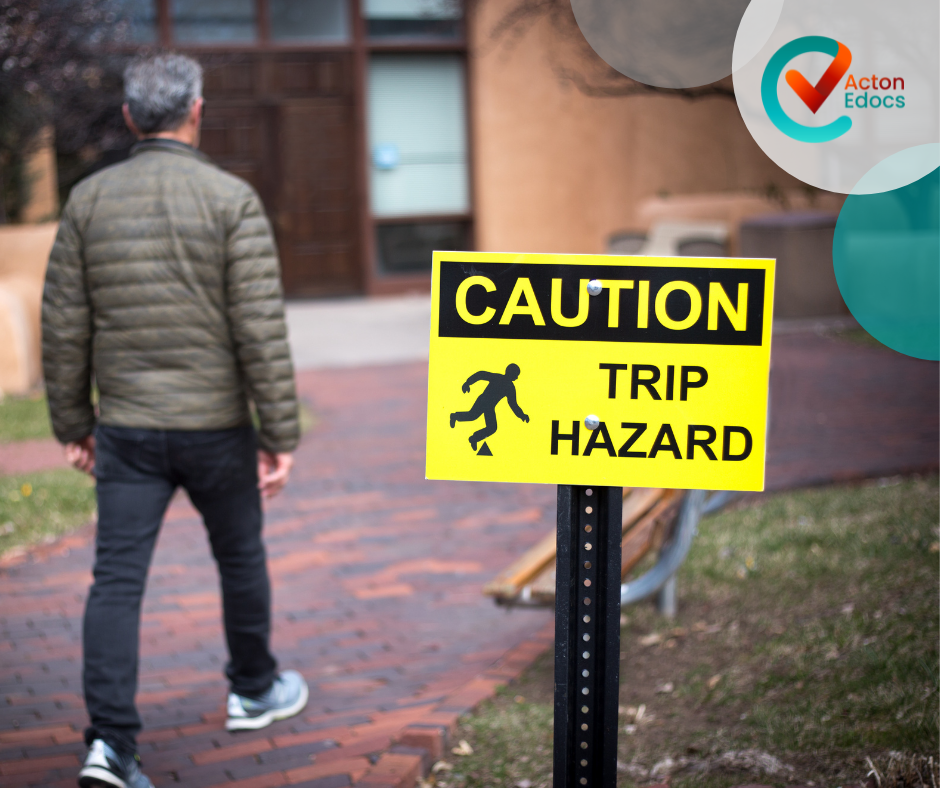
Nearly 20,000 slips and trips were reported to RIDDOR in the 2019-20 reporting year, with over eight times as many reported to the Labour Force Survey. That’s 29% percent of all reported accidents!
Even the best of us trips up occasionally, but there are steps that can be taken in order to mitigate the risk of the most common cause of non-fatal injury in the workplace in recent years.
Identifying the Hazards
When it comes to identifying what could be a trip or slip hazard in the workplace, there are a lot of things you should look out for:
- Are walkways and corridors clear and free of obstructions and equipment?
- Is the flooring type in the area likely to curl (mats) or become slippery (tiling)?
- Are all cables, wires and connectors tidy and not dragging along the floor?
- Is there any rain ingress at entrance or exit doors that could make the floor slippery?
- Is ice build-up likely in outdoor areas during the winter?
- Are all slopes, ramps, and stairs brightly lit and easy to see/navigate?
While these are only a few examples, there are a lot of other tests and checks that you can implement to ensure that your workplace is safe and free from trip hazards.
Identify, Resolve, Maintain
Once you have identified any hazards in your workplace, it is important to keep track of them to make sure that they do not remain or become a hazard again in the future. Pushing down the raised corner of a mat by the front door is all well and good, but if it is continually becoming raised (and therefore a hazard), then it is still going to be a problem.
When the hazard has been removed, be sure to try to find the root cause of the problem; is it a one-time hazard, or will it continue to reoccur? Are there any further preventative maintenance actions required? Have there been any incidents or injuries associated with this hazard? This kind of follow up is essential for preventing further hazards as well as incidents and can also be implemented proactively in other areas to fix a potential hazard before it becomes one.
As in the example above, if a floor mat by the entrance is curling up at the corner, it could well be a trip hazard to anyone entering the building. Pushing it back down into place will fix it, but the root cause is that there isn’t enough clearance between the door and the floor, causing the mat to roll and crease whenever the door is opened.
A better preventative maintenance solution could be to raise the clearance at the bottom of the door (if doing so is reasonably practical), move the mat further from the door, or replace the mat with a smaller, thinner, or custom shaped mat to prevent it from catching in the future.
Tips for Trips and Slips
There are a few things that you can do on a daily basis to help prevent the risk of a trip or slip hazard at work to make it safer for everyone, such as:
- Keeping cables and wires neat and tidy, so that they do not trail along the ground
- Cleaning up spillages and water leaks
- Reporting damaged flooring and carpet tiles
- Making sure chairs are tucked into desks when not in use
- Ensuring bags and laptop cases are properly stored and not left in walking areas
- Putting down salt/grit on pavements outside during frosty/wintery weather
If you’re unsure whether something in your working environment is a hazard, speak to your manager or Health & Safety Lead. And for more advice, take a look at our blog, at:
